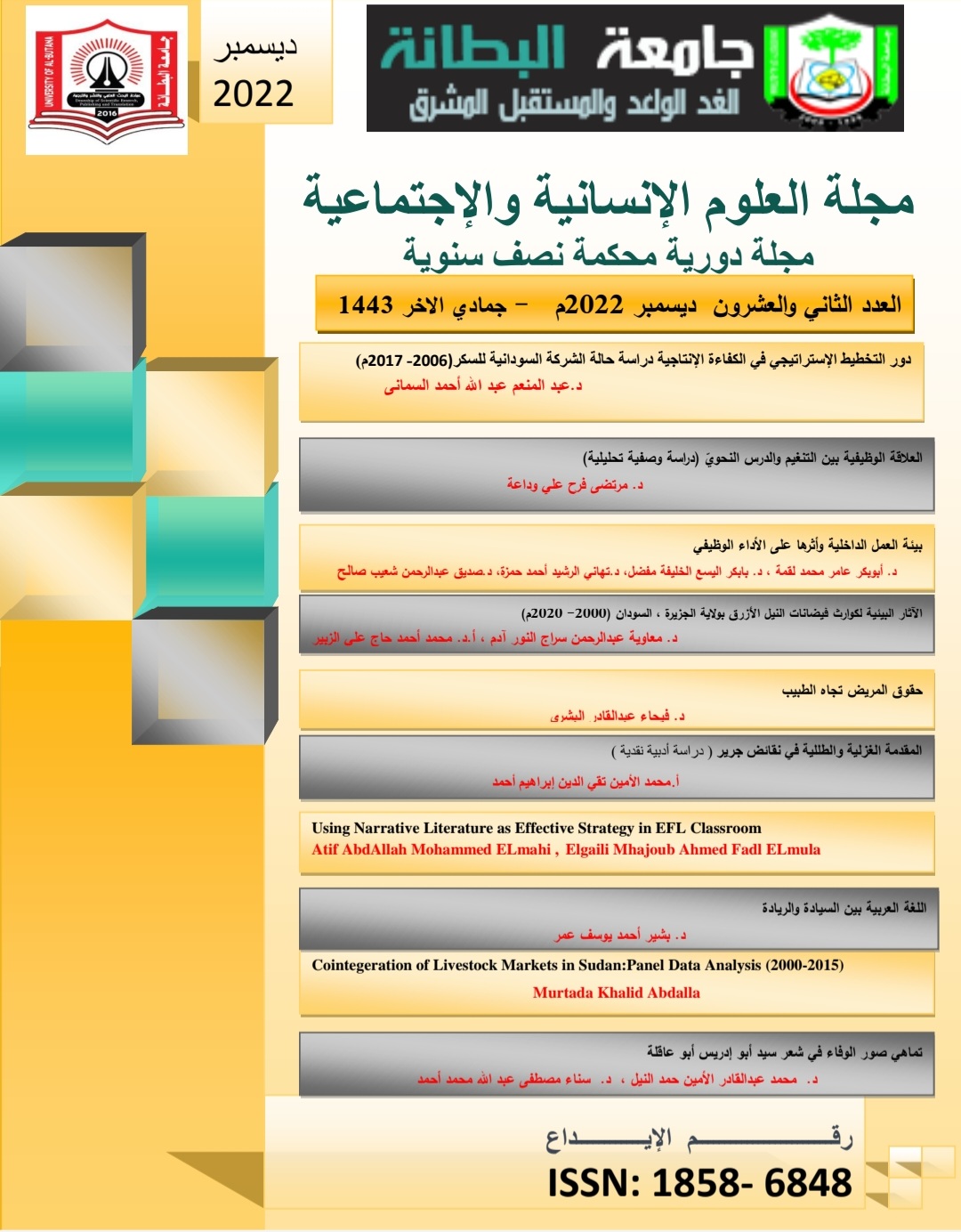الآثار البيئية لكوارث فيضانات النيل الأزرق بولاية الجزيرة ، السودان (2000-2020م)
الملخص
The study aimed to identify the environmental effects of the floods of the Blue
Nile in the Gezira State – Sudan and to assess the interest of officials and
residents in environmental health after the end of the floods. The study
followed several methods, including descriptive, analytical, inductive and historical. Data were collected by personal interview, observation and
questionnaire. The sample size of the questionnaire was (300) families, which
were chosen randomly. The data were analyzed using the statistical package
for social sciences (SPSS) program. The study reached several results, the most
important of which are: the floods of the Blue Nile and its branches cause the
spread of poisonous animals 99.3%, poisonous scorpions and spiders 52%,
snakes 39.7%, the spread of insects and mosquitoes 63%, flies 23.7%, malaria
diseases 57.7%, dysentery 13.7%, and typhoid 10%. Statistically (0.001),
deterioration of the environment, it is difficult to return the natural
environment to what it was before the flood 77.3%, lack of concern for the
health of the environment after the flood receded 81%, with a statistical
significance (0.001). The study made a number of recommendations to dry up
flood waters and stagnant rains to cut off the life cycle of insects by
eliminating their breeding environment, implement spraying campaigns with
machines, especially aircraft, to cover the largest area in the region, pay
attention to environmental health after floods, and dry up stagnant water with
pumps.
